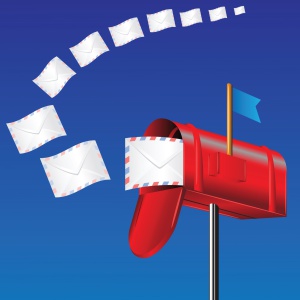Gamification or reputation systems have become quite popular with web and mobile apps. Keeping score of users’ activity helps websites find out who should be rewarded and encourages users to contribute. Websites like StackOverflow and Foursquare are two of the common applications that owe much of their success to gamification. These reputation systems have been in use on forums and communities for a long time and work well in building a quality user engagements.
There are a couple of gems that can help seamlessly build a gamified experience for users. One of the gems that I feel is quite useful, customizable, and well maintained is merit.
The simple rule behind gamification is that when a user performs an action or achieves a quantifiable goal, there is a reward. For example: * When a user comments 10 they are given a Junior Critic Badge * When the user posts 5 articles they are given the Junior Contributor Badge
Setup Merit
To get started with Merit, add the following code to your gem file.
gem 'merit'run
bundle installOnce the bundle is complete, add the initializer and migration. The initializer mentions the name of the badges we want use. We can also define which datastore we plan to use (PostgreSQL or mongoDB). In the migration, the model to be “gamified” is specified. For example, we are going to track user activity, so we need to add the migration to the User model:
bundle exec rails g merit:install
=> Creates the initializer in /config/initializer/merit.rb
bundle exec rails g merit model_name (eg: user)
=> would add has_merit to the user modelNow migrate the database:
bundle exec rake db:migrateAnother folder to be aware of is the app/models/merit/*. This directory holds the definitions of the rules for the badges given to users. The ability to write the rules in a plain Ruby file is one the major advantages of using Merit. Using a file based approach makes it highly customizable.
Let’s create our first badge.
The badges we plan to use need to be written in the initializer file config/initializers/merit.rb. The method to create a badge is Merit::Badge.create!. It accepts the following parameters:
:idinteger (required):namethis is how you reference the badge (required):level(optional):description(optional):custom_fieldshash of anything else you want associated with the badge (optional)
Example:
Merit::Badge.create!(
id: 1,
name: "Jr.Critic",
description: "Over 10 comments"
)
Merit::Badge.create!(
id: 2,
name: "Sr.Critic",
description: "Over 50 comments"
)Once the badge is created, it’s time to define the rules to award this badge to the user. As mentioned before, the rules to award the badge are defined in the app/models/merit/* folder. We need to create a file callled badge_rules.rb. Note that we can provide a temporary or permanent badge. A temporary badge is revoked when its rules are no longer met.
The rules are defined by calling the grant_on method and providing a block. The parameters that for this method are:
'controller#action'– The name of the controller and action that triggers the block:badge– The:nameof the badge:level– The:levelof the badge:to– The name of object that holds the badge receiver. It needs a variable named@modelin the associated controller action, like@postforposts_controller.rbor@commentforcomments_controller.rb- Can be a method name, which called over the target object should retrieve the object to badge. If it’s
:userfor example, merit will internally call@model.userto find who to badge - Can be
:itself, in which case it badges the target object itself (@model) - Is
:action_userby default, which meanscurrent_user
- Can be a method name, which called over the target object should retrieve the object to badge. If it’s
:model_name– Defines the controller’s name if it’s different from the model’s (e.g.RegistrationsControllerfor theUsermodel).:multiple– Whether or not the badge may be granted multiple times.falseby default.:temporary– Whether or not the badge should be revoked if the condition no longer holds.false-badges are kept for ever- by default.&block– Can be one of the following:- Empty / not included: always grant the badge
- A block which evaluates to boolean. It receives the target object as a parameter (e.g.
@postif you’re working with aPostsControlleraction). - A block with a hash composed of methods to run on the target object and expected method return values
Example:
# app/models/merit/badge_rules.rb
grant_on 'comments#create', badge: 'Jr.Critic', to: :user do |comment|
comment.user.comments.count >= 10 && comment.user.comments.count < 50
end
grant_on 'comments#create', badge: 'Sr.Critic', to: :user do |comment|
comment.user.comments.count >= 50
endIt’s clear from the above code that the Junior Critic badge will last only as long as the user’s comments count is greater than 10 and less than 50. When his comment count goes to more than 50, a new badge will be issued and The Junior Badge will be removed.
To access the badges of the current user (assuming that your logged in user is known as current_user):
current_user.badgesIf you want add/remove badges manually, use:
current_user.add_badge(badge.id)
current_user.rm_badge(badge.id)An example use case for the above situation is when you want to give a ‘premium user’ badge for paying customers. Instead of writing a rule and have it checked many times, just add it from the payment controller and action.
Point System
From here, we can build a cool reputation system, but t won’t be complete without displaying points. The calculation of points is similar to the badge system. Define the point rules in a file called (you guessed it) app/models/merit/point_rules.rb.
Points are configured using a method called score that accepts the same parameters as the badge system.
For example, if you require the user’s points to increase by one when he comments on an article:
score 1, on: 'comments#create', to: [:user]
score 5, on: 'comments#vote_up', to: [:comment_owner]:user is the the attribute of the model (comment) that points to the user. In the case of vote_up, the owner of the comment was referenced by an attribute in the Vote model as comment_owner.
You can manually add points, just like badges:
current_user.add_points(20, category: 'Optional category')
current_user.subtract_points(10, category: 'Optional category')To find the points awarded since a given date say, for a leaderboard, use:
score_points = current_user.score_points(category: 'Optional category')
score_points.where("created_at > '#{1.month.ago}'").sum(:num_points)Ranking system
Similar to both points and badges, ranking is defined in app/models/merit/rank_rules.rb.
Ranking rules are created with the set_rank method. The parameters are as follows:
:level– Ranking level (greater is better, Lexicographical order):to– Model or scope to check if new rankings apply:level_name– Attribute name (default is empty and results in ‘level’ attribute, if set it’s appended like ‘level_#{level_name}’)
Example:
set_rank level: 2, to: User.active do |user|
user.comments > 10 && user.followers >= 10
endThis is more functionality available with Merit. Using something like ActiveRecord Observer, it is simple to track the badges/points being awarded and create the required notification for users. Try out the gem and bring gamification and, thus, more engagement to your web application.
Frequently Asked Questions on Increasing Engagement with Merit and Gamification
What is the concept of merit and gamification in increasing engagement?
Merit and gamification are strategies used to increase user engagement and participation. Merit refers to the recognition of a user’s contributions or achievements, often through a system of points or badges. Gamification, on the other hand, involves applying game design elements in non-game contexts. This could include leaderboards, levels, and rewards. These strategies can be used in various contexts, such as in online communities, learning platforms, or customer loyalty programs, to motivate users to engage more actively and frequently.
How does merit and gamification boost user retention?
Merit and gamification can significantly boost user retention by making interactions more enjoyable and rewarding. Users are more likely to return to a platform where their efforts are recognized and rewarded. Gamification elements like leaderboards and levels can also create a sense of competition, encouraging users to engage more to improve their ranking or status. This not only increases the frequency of engagement but also the duration, leading to higher retention rates.
How can I implement merit and gamification in my platform?
Implementing merit and gamification in your platform involves several steps. First, you need to identify the behaviors you want to encourage. This could be posting content, commenting, or sharing, among others. Then, you can assign points or badges to these actions to reward users. You can also create levels or leaderboards to foster competition. There are several tools and software available, like the Merit gem for Ruby, that can help you implement these features.
What are some examples of successful merit and gamification implementations?
There are numerous examples of successful merit and gamification implementations across various industries. In the education sector, platforms like Duolingo use gamification to make learning languages fun and engaging. In the business sector, companies like Starbucks use a points-based system in their customer loyalty program to encourage repeat purchases. Online communities like Reddit also use a system of points and badges to recognize and reward user contributions.
Are there any downsides to using merit and gamification?
While merit and gamification can be highly effective in increasing engagement and retention, they are not without potential downsides. If not properly implemented, they can lead to unhealthy competition or discourage users who are not as active or competitive. It’s also important to ensure that the rewards system is fair and transparent, and that it doesn’t inadvertently incentivize negative behaviors. Therefore, careful planning and implementation are crucial.
How can I measure the success of my merit and gamification strategy?
The success of your merit and gamification strategy can be measured through various metrics. These could include user engagement rates, retention rates, the frequency of desired behaviors, and user feedback. It’s important to regularly monitor these metrics and adjust your strategy as needed to ensure its effectiveness.
Can merit and gamification be used in any type of platform or community?
Merit and gamification can be used in a wide variety of platforms and communities, from online forums and social networks to learning platforms and customer loyalty programs. However, the specific implementation may vary depending on the nature of the platform and the behaviors you want to encourage.
What are some best practices for implementing merit and gamification?
Some best practices for implementing merit and gamification include clearly defining the behaviors you want to encourage, ensuring the rewards system is fair and transparent, regularly monitoring and adjusting your strategy, and considering the specific needs and preferences of your users. It’s also important to keep the gamification elements fun and engaging, and not let them overshadow the core functionality of your platform.
Can merit and gamification improve user satisfaction?
Yes, merit and gamification can significantly improve user satisfaction. By making interactions more enjoyable and rewarding, users are likely to have a more positive experience on your platform. This can lead to higher satisfaction levels, as well as increased loyalty and advocacy.
How can I get started with merit and gamification?
Getting started with merit and gamification involves several steps. First, you need to identify the behaviors you want to encourage and how you will reward them. Then, you can choose a tool or software to help you implement these features. It’s also a good idea to look at successful implementations for inspiration and best practices. Finally, remember to regularly monitor and adjust your strategy to ensure its effectiveness.
Tech Entrepreneur. Writes Elixir, Ruby, Go for a living. Into functional paradigms DDD/CQRS/EventSourcing architecture these days. @manusajith on the interwebs. Lazy blogger who scribbles at Til.Codes


